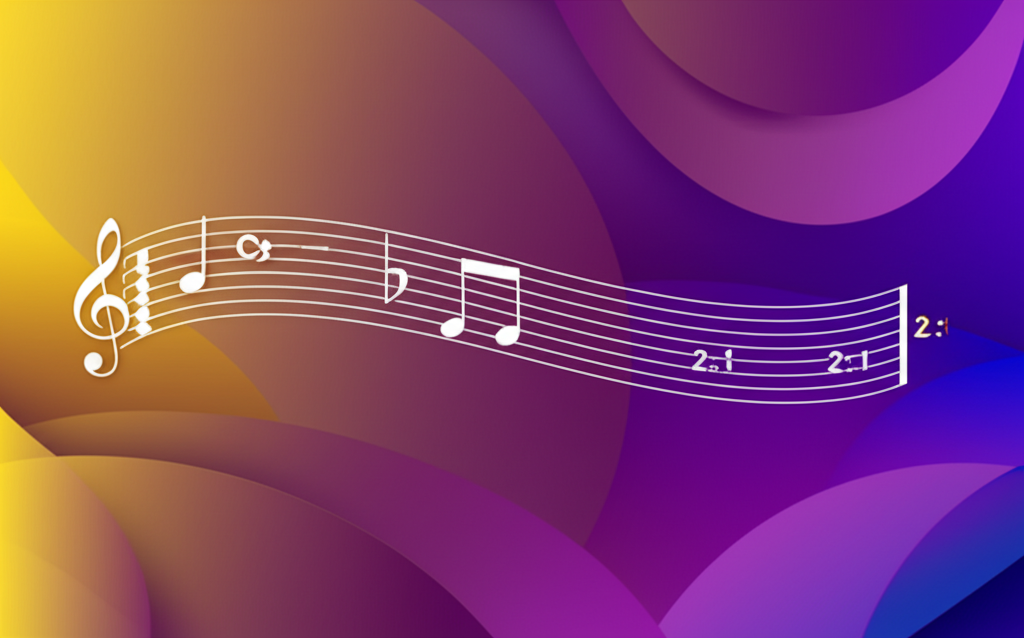Understanding the Perfect Octave
The perfect octave is arguably the most important interval in music. After the unison (two identical notes), it is the most consonant and stable sound, creating a feeling of resolution and completeness. An octave spans twelve semitones (or half steps) and represents the point where a note's identity repeats, just at a higher or lower pitch. Think of it as the same note in a different "shade"—brighter when higher, and deeper when lower.
It's called "perfect" because, unlike other intervals like thirds or sevenths, it doesn't come in major or minor variations. Its quality is pure and unwavering. It is the sonic anchor that defines our entire system of pitch.
An ascending perfect octave from Middle C (C4) to the C above it (C5).
Characteristics of the Perfect Octave
An octave is defined by several key properties:
- Diatonic Distance: It spans eight notes of a major or minor scale (e.g., from C to the next C is C-D-E-F-G-A-B-C, an eight-note span). The name "octave" comes from the Latin word octo, meaning eight.
- Chromatic Distance: It always contains exactly 12 semitones (half steps).
- Quality: It is a "perfect" interval, meaning it is acoustically pure and has no major or minor form.
- Sound: It sounds incredibly stable and resolved. Notes an octave apart blend so well they can sound like a single, richer note.
- Function: It establishes octave equivalence, the principle that notes with the same name (e.g., all F's) are musically related and function similarly, regardless of their register.
Melodic vs. Harmonic Octaves
Octaves can appear in music in two primary ways:
- Melodic Octave: The two notes are played one after another, creating a leap in a melody. This can be ascending (leaping up) or descending (leaping down).
- Harmonic Octave: The two notes are played simultaneously. This is often used to add weight and power to a note.

Example: An ascending melodic octave (F4-F5) , a descending melodic octave (G5-G4), and a harmonic octave (A4 and A5 played together).
Musical Context and Usage
The perfect octave is a fundamental building block used everywhere in music:
- Melody Doubling: In orchestras, a flute might play a melody while the piccolo plays the same line an octave higher. Cellos and double basses often play the same bass line an octave apart. This technique, called doubling, reinforces the melody and adds richness and power without changing the harmony.
- Scale & Chord Framework: Scales are defined by the octave; the pattern of whole and half steps repeats every octave. Chords are also often framed by an octave, such as a C Major chord with C in the bass and another C in the melody.
- Vocal Harmony: When men and women sing the same melody together, they are typically singing in octaves due to the natural difference in their vocal ranges.
Acoustic and Perceptual Properties
The octave's special sound is rooted in physics and human perception:
- Frequency Ratio: The frequency of the higher note in an octave is exactly double the frequency of the lower note. This simple 2:1 ratio is why it sounds so clean and consonant. For example, the standard tuning note A4 is 440 Hz; the A an octave above (A5) is 880 Hz, and the A an octave below (A3) is 220 Hz.
- Harmonic Series: When you play a single note, it produces a fundamental frequency along with a series of quieter, higher pitches called overtones or harmonics. The first and strongest overtone produced is the note an octave above the fundamental. Your ear hears this inherent connection, making the interval feel natural and resolved.
- Perceptual Equivalence: Our brains are wired to perceive notes an octave apart as being in the same "pitch class." This concept, called octave equivalence, is the foundation of nearly all musical systems worldwide.
Ear Training: How to Recognize a Perfect Octave
Training your ear to recognize octaves is a crucial skill. Here are some effective methods:
- Reference Songs: The first two notes of "Somewhere Over the Rainbow" form a clean, memorable ascending octave. For a descending octave, think of the opening of "The Christmas Song (Chestnuts Roasting...)" on the words "Chestnuts roasting...".
- Vocal Matching: Try to sing a note. Then, try to sing the "same" note but much higher or lower. That leap you are making is an octave. Listening to a man and a woman sing "Happy Birthday" together is great practice for hearing octaves.
- Instrument Practice: On a piano or guitar, play a note, then find the next note with the same name up or down the instrument. Play them back and forth, and then together, to internalize the sound.

The famous ascending octave leap from "Somewhere Over the Rainbow."
Historical and Cultural Significance
The octave's importance has been recognized for millennia and across cultures:
- Ancient Greece: The philosopher Pythagoras is credited with discovering the octave's pure 2:1 mathematical ratio, viewing it as a symbol of cosmic order.
- Western Music: From medieval plainchant to modern composition, the octave has served as the boundary marker for modes and scales and a foundational element of harmony.
- Equal Temperament: In our modern tuning system, the octave is the only interval that remains perfectly pure (a true 2:1 ratio) . All other intervals are slightly adjusted to allow music to sound in-tune in any key.
- Global Music: The concept of octave equivalence is found in virtually every musical culture around the world, making it a near-universal principle of music.
By understanding the perfect octave, you grasp the very framework of how we organize musical pitch. It is the alpha and omega of intervals—the point of return and renewal that makes music feel both logical and limitless.
